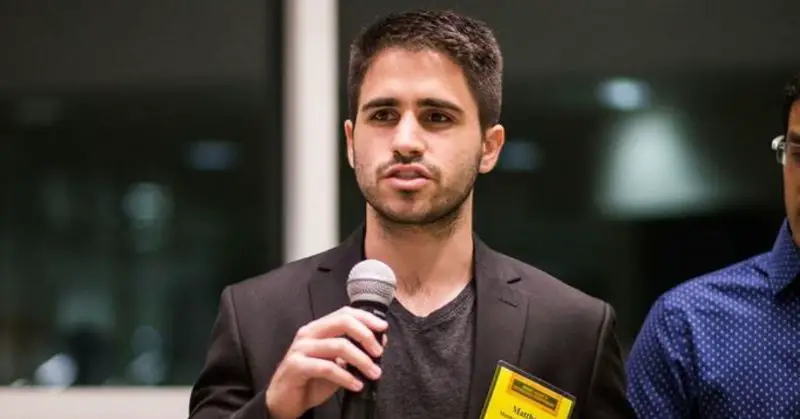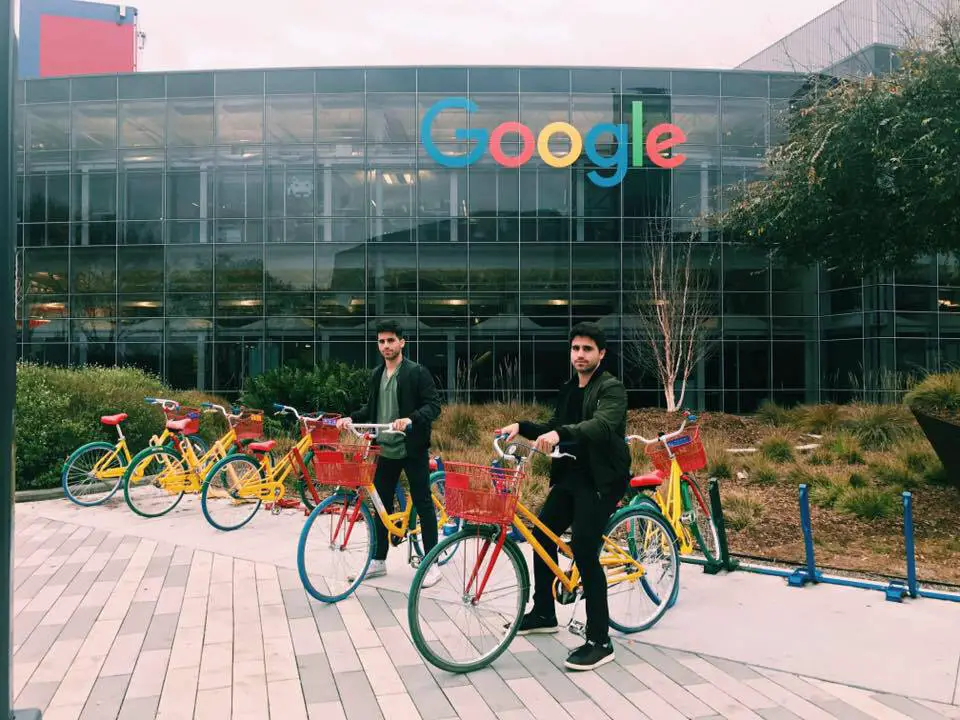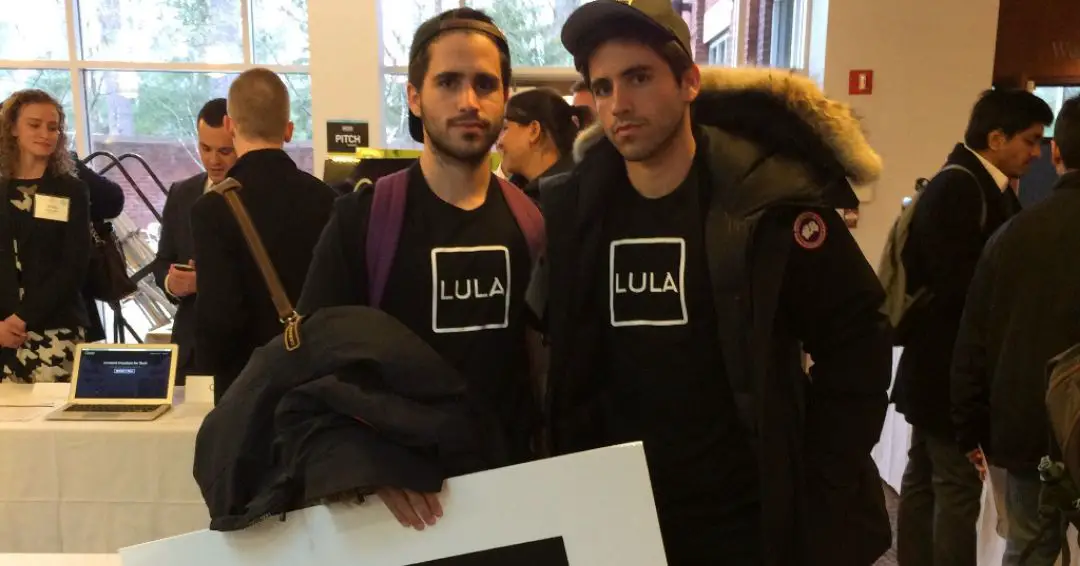First, in 2009, Uber changed transportation for city-folk and tourists by allowing them to hail cars through an app. Nine years later, Matthew Vega-Sanz from Babson College and his brother Michael head off in another direction toward a peer-to-peer rental system with LulaRides.
LulaRides is an app that allows students on campus to rent out each other’s cars for a couple of hours. Although the app is used only on a few college campuses in Massachusetts, Vega-Sanz and his crew aim for the University of Miami by fall 2019 and eventually other cities.
Natalya Pomeroy: What made you want to kick the LulaRides app into action and make it accessible for everybody?
Matthew Vega-Sanz: Honestly, necessity.
My twin brother Michael and I got into Babson about two years ago. We grew up completely used to having a car and the freedom to go out and get food whenever and wherever we wanted. A couple weeks into school, we wanted something from home; we wanted Papa John’s.
We were like, “Let’s see if there are any Papa John’s in the area and see if they deliver.” So, we called Papa John’s and tried to bribe them, but it didn’t work. We ended up just getting Domino’s again because it made no sense to pay 30 dollars to pay for an Uber to pick up an $8 pizza.
When we went outside to get the pizza from the delivery man, I noticed the parking lot outside my dorm packed to capacity and thought, “Hey, wouldn’t it be cool if I could rent out one of these cars?”
As two students who were financially sensitive, Uber rides added up quickly, and Zipcar has all those membership fees. So, we thought, “Let’s build this thing so that not only we could use it, but also kids in our same predicament who need cheap transportation to get things like food.”
With Lula, Michael and I built it because it was actually something we needed. As twins, we’re constantly sharing everything, even the car. So, I could take the car out on a date, and Michael could rent out a Lula to go to the gym and other things like that.

NP: Cheaper rides are also nice. I think what is special about LulaRides is that students can rent out each others’ cars for a little bit to run some errands.
MVS: Up until this point, the only real option college students had — if they didn’t have a car — is Zipcar. And you have to pay all these membership fees and rent it from someone else.
With Lula, we’re not only helping students save money, but we’re also helping them make money. Michael and I use a lot of money from Lula to pay off our student loans. We’ve even had students quit their part times and use Lula to pay for their textbooks, food, extra money to go out and eat with friends or to pay for student loans. How much you make is something we pride ourselves on.
NP: What is an average Lula Ride like? Can you walk me through that?
MVS: The driver will open up the app and list out what type of car they need — like an SUV or just any car — and once they decide, they’ll send a rental request over by pressing “Rent” on the car they want.
The owner of the car will get a notification on their phone that says, “So and So wants to rent your car from This Time to This Time,” and they’ll be able to look at the person’s profile to decide whether or not to accept or deny the request.
Once the request has been accepted, the owner decides a place to meet up for a key swap. The key swap is a quick meet and greet — the owner prefers it that way to see who’s actually getting in the car so they can get a feel for the person — and the driver rents out the car.
Then, the driver returns the car. The driver and owner will come back to campus and meet up with the owner for the key swap. The owner can check on the car for any damage. We’ve been fortunate enough that there hasn’t been any.
NP: Besides price, how does LulaRides differ from Uber or other car-sharing apps?
MVS: The biggest thing is, unlike Uber and Lyft, Lula users actually drive themselves. They’re in full control of the vehicle.
Another big thing is that [LulaRides] is completely free to join, unlike Zipcar with the membership fees. You can be a Lula Renter within a day, or an hour sometimes, unlike a week on other platforms.
We’re probably the only peer-to-peer platform that ensures 18-year-old drivers. We’re the first to do it outside of California and only ones doing it at the moment.
NP: I’ve also noticed that LulaRides provides an additional security aspect. Can you elaborate on that?
MVS: One of the things that really shocked us was the parents. Particularly, parents who have daughters. They are terrified of the thought of their daughter going in an Uber alone because it puts them in a vulnerable position; they’re alone with a stranger.
So, parents enjoyed the fact that now their kids are in control of the ride or don’t have to get in a car with someone who drives like a maniac. They don’t have to worry about getting in a car with a stranger who will take advantage of them. Those are the two facts that make parents feel more comfortable.
NP: And how far do you see the car-sharing on campuses trend going?
MVS: We’ll probably just be on campuses for the rest of 2018. But about midway through 2019, we want go beyond college campuses. We’ve gotten contacted by government officials in cities throughout the country asking us if we’d be open to running pilots down the line.
They’ve noticed ride-sharing platforms like Uber and Lyft don’t necessarily help traffic but actually really increase it, particularly in urban areas. Whereas, car-sharing and bike-sharing help limit traffic.
So, by 2019, we’ll have expanded to other cities. Apart from car-sharing, we also see Lula as a platform for shared mobility. Eventually, we want to add bikes to the equation.
We want to provide access to essentially any type of vehicle down the line through Lula, and not just on college campuses. Car-sharing on college campuses is just the first step to something we hope to be a huge conglomerate of different types of transportations that can be accessed through the Lula app.

NP: So, now you plan on going city-wide, and you’ve been approached by some officials. How has all of this come together?
MVS: At first, it was slow. My brother and I reached out to everybody. We had one media publication on a popular tech website based in Boston, and we started to get a lot of inquiries and invites to events. We started going to events, interacting with people, setting up booths — that’s when things really started to change.
One of the stepping stones was when we went to a Miami conference last summer called Emerge Americas. There were 125 startups, and we ended up being in the top five of most popular or most potential. When that happened, we had a bunch of people coming to our table.
The networking came from attending the events and putting ourselves out there. Not necessarily hiding behind a screen and trying to do online ads like what a lot of people do. We’re always trying to get on college campuses and be there in person.
NP: So what tips do you have for anyone who wants to start up their own app or a campus-wide network similar to LulaRides?
MVS: If they’re starting their own app, my number one tip is to see if they can find someone who will code it for them, maybe as a co-founder. Or — even if it delays them six months — try to learn how to code on their own.
It’s going to save them so much money and time and frustration with developers. My brother would say the same thing. He’s not tech-y at all, so we made the mistake of not coding ourselves. If I could go back in time, I would have taken a 12-week course to learn how to program so I could do it myself.
If they want to build a network, I would say just go out and talk to people. Don’t try to hide behind a screen. Just go out and meet people face to face. College campuses are a great place because most people are willing to help you if you’re willing to ask for it.

















